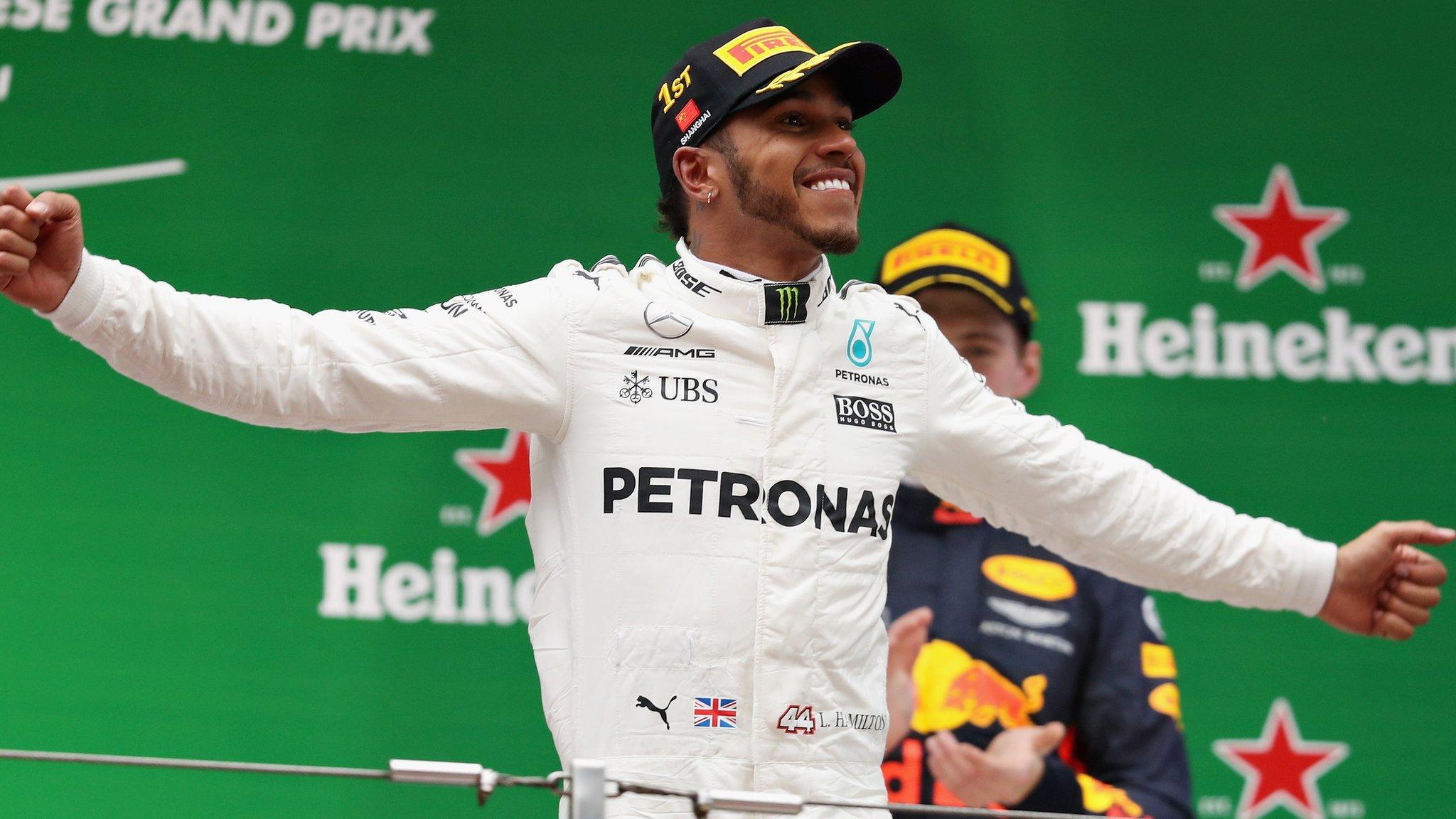Lewis Hamilton-Sebastian Vettel rivalry could lead to classic F1 season
- Published
- comments
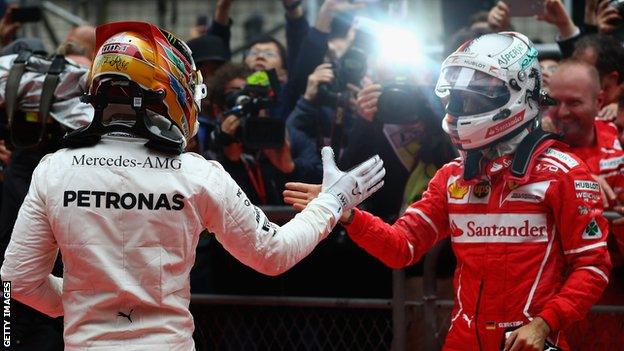
Hamilton and Vettel appear to be relishing the prospect of a more competitive season between Mercedes and Ferrari
Two races down, a win and a second place apiece for Lewis Hamilton and Sebastian Vettel, and the prospect of the most exciting championship fight for many years. Formula 1 has been waiting for this for a long time - arguably too long.
The last three years of Mercedes domination led to existential questions about the state of the sport, and at least in part to the decision to change the rules to produce faster, more demanding cars this year.
That move now looks to have been one of great foresight. Mercedes find themselves locked in a battle with a Ferrari team whose car appears to be at least as fast, and Hamilton faces a fight with a rival who he truly respects as being close to an equal.
The three-time British world champion's excitement at this is palpable.
He was talking after victory in China about the "hugely respectful competitiveness" between himself and Vettel of Germany - of this being the "most exciting" season of his career.
He also said this championship fight could be "one of the closest ones, if not the closest, I have ever experienced".
That is really saying something considering he lost out by a single point to Kimi Raikkonen in 2007 - a year he scored exactly the same number of points as his McLaren team-mate Fernando Alonso - and that he won the 2008 title on the last corner of the last lap of the last race.
Vettel v Hamilton
To put what appears to be in store in 2017 in perspective, it is almost 10 years since F1 was in a similarly enviable position of having two world-class drivers, in apparently equal cars, provided by two different teams facing off for the title.
In 2014 and 2016, Hamilton's rivalry with former Mercedes team-mate Nico Rosberg went down to the wire - but in both cases it was because Rosberg had the better of the reliability. When all things were equal, Hamilton beat the German two races to every one.
In 2012, Alonso and Vettel took it to the final race for Ferrari and Red Bull. But that was the Spaniard performing heroics in a car that was not really up to the job. Fights on the track between the two were rare as a result.
Probably 2010 was the most recent equivalent to what F1 has in 2017 - when Vettel and Red Bull team-mate Mark Webber, Alonso in a Ferrari, and Hamilton and Jenson Button in McLarens fought a five-way battle for much of the season. Alonso, Webber and Vettel were all still realistic contenders at the final race - and even Hamilton still had a mathematical chance.
Before then, the breathless McLaren v Ferrari battles of 2007 and 2008 were the closest to what appears to be developing in 2017.
Potentially, then, this is a year for the ages in the making. Two men, seven world titles between them, racing for two of the most iconic names in motorsport history, their cars evenly matched on pace, but with enough differences to guarantee competitive swings through the season.
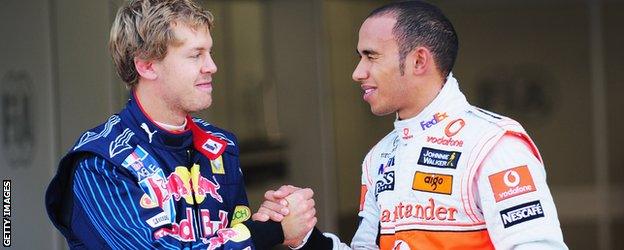
Old foes: The teams may have changed but the rivalry remains the same
How do Mercedes and Ferrari match up?
After only two races, it is a little early to be making definitive judgements on the respective qualities of the two frontrunning cars - but some patterns are emerging.
In qualifying, the Mercedes appears to have a small edge - at least in Hamilton's hands. In the races, there is little to choose between the two cars.
The change to faster, more demanding cars this season has allowed Ferrari to close the performance gap on Mercedes, helped by a big step forward by the engine department in Maranello, too.

In the race in China, once Vettel had worked his way up into clear air behind Hamilton - thanks in part to a quite outstanding outside pass of Red Bull's Daniel Ricciardo at Turn Five - the two were exchanging lap times, albeit seven or eight seconds apart.
Hamilton said: "It is very, very close and there were times when Sebastian put laps in and it was hard to even match the time. The last 10 or 12 laps he was doing a 1:35.6 and I was doing a 35.8 and it was very hard to get to where he was. Then there was other times in the race when I was quicker."
The pattern was the same in Australia two weeks ago. Vettel was quicker on the softer tyres in the opening stint, and Ferrari pressured Mercedes into an early stop that cost Hamilton the race. Then there appeared to be nothing between them on the harder tyres in the second stint.
The cars have varying strengths and weaknesses. The Mercedes is slightly over the minimum weight limit, a problem that affects performance and which the team are trying to address as a matter of urgency, while the Ferrari has no such problem.
And they have different design philosophies.
Hamilton said: "Our car is longer so it's probably more stable in the higher-speed corners. Theirs is shorter, more nimble."
This could mean the Ferrari has the advantage in slower, more technical places, the Mercedes at high-speed tracks.
In theory, it should also mean the Mercedes is kinder to its tyres. But that was not the case in Australia, and would be a turnaround from the general trend in recent years, when the Ferrari has had more gentle tyre usage - sometimes to their detriment, in qualifying especially, but sometimes to their advantage, such as in Vettel's victory in Malaysia in 2015.
All in all, though, as long as Ferrari can keep pace in the development war - another weakness of recent years - the advantage should ebb and flow through the season.
And what of Bahrain this coming weekend? At least 20C hotter than the 12C in China, it is a race where Ferrari have been very competitive in the past two seasons, even when overall they have not been.
"Being that it's often a warmer race, Ferrari is very good in hotter conditions," Hamilton said. "These were quite good conditions for me today with our car. When it steps up in temperature… so far in the first race it's been shown as not the greatest for us just yet, so we're just learning on the tyres.
"Hopefully it will be better... It will definitely be better than it was in Melbourne. I think they will be very, very quick in the next race but there's a lot of straights there as well and we've obviously got, I think, still the strongest power unit on the grid - so that will come into play."
The sport as a whole
Drivers pushing hard throughout, 'real' overtaking moves where the much-maligned DRS overtaking aid helps but is not overly decisive, battles that last many laps. That is a description of what aficionados might call a 'proper' grand prix, something that has been lost in recent years.
"The last 20-odd laps we were just pounding around as fast as we can, exchanging lap times and I think that's what racing is all about," Hamilton said.
"Perhaps in the future there will be times when we won't have a safety car and there won't be that six-second gap, it'll be right on the tail either way. I'm excited for that."
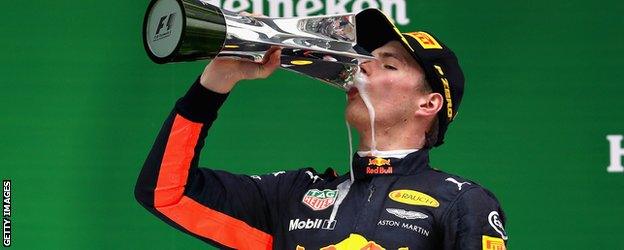
Red Bull's Max Verstappen was tipped for a potentially storming race despite starting in 16th - and lived up to the hype
In this, another aspect of the changes for 2017 has played a crucial role. The decision to force Pirelli to design tyres on which drivers can push hard throughout, rather than having to nurse them to stop them overheating, has transformed the racing.
Not only are drivers pretty much flat out through the race, but cars can race close together for many laps at a time, and drivers can still have enough grip left to make passing moves happen.
This was especially clear in the multi-car train of Daniel Ricciardo, Max Verstappen, Kimi Raikkonen and Vettel in the opening stages of the race.
Overtaking might be a little harder than last year, but after the premature complaints following Australia, China proved it is possible. And as Vettel said: "Overtaking was difficult. But it should be. It should not just be flying or sailing past."
This revived 'hardcore' aspect to F1 is almost certainly a factor in Fernando Alonso producing two unexpectedly strong races in the uncompetitive McLaren-Honda.
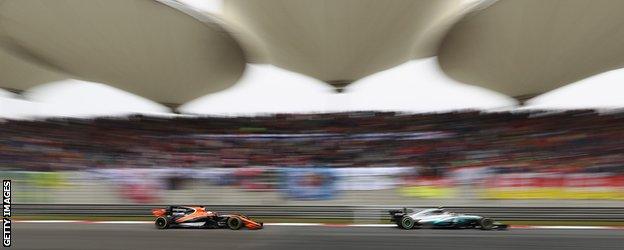
Mercedes' Valtteri Bottas is under pressure to perform in his one-year contract - particularly with Fernando Alonso's McLaren deal up for renewal at the end of the season
A fortnight after holding off two faster cars for most of the race in Australia, Alonso was again in outstanding form in China.
He vaulted from 13th to eighth on the first lap - a feat put in the shade only by Verstappen's brilliant charge from 16th to seventh - but even more impressively was on course for seventh or eighth until his driveshaft failed at half distance. In a car with a power deficit of at least 100bhp, on a track with the longest straight in F1.
The pity is that a driver of Alonso's calibre is having to "drive like an animal", as he put it, to qualify 13th and race for seventh. But at least in F1 2017, driving like that brings rewards, as it should at the sport's highest echelon.
All in all, China was Formula 1 as it is meant to be, and has not been for some time. And already this is looking like a season to savour.
- Published9 April 2017
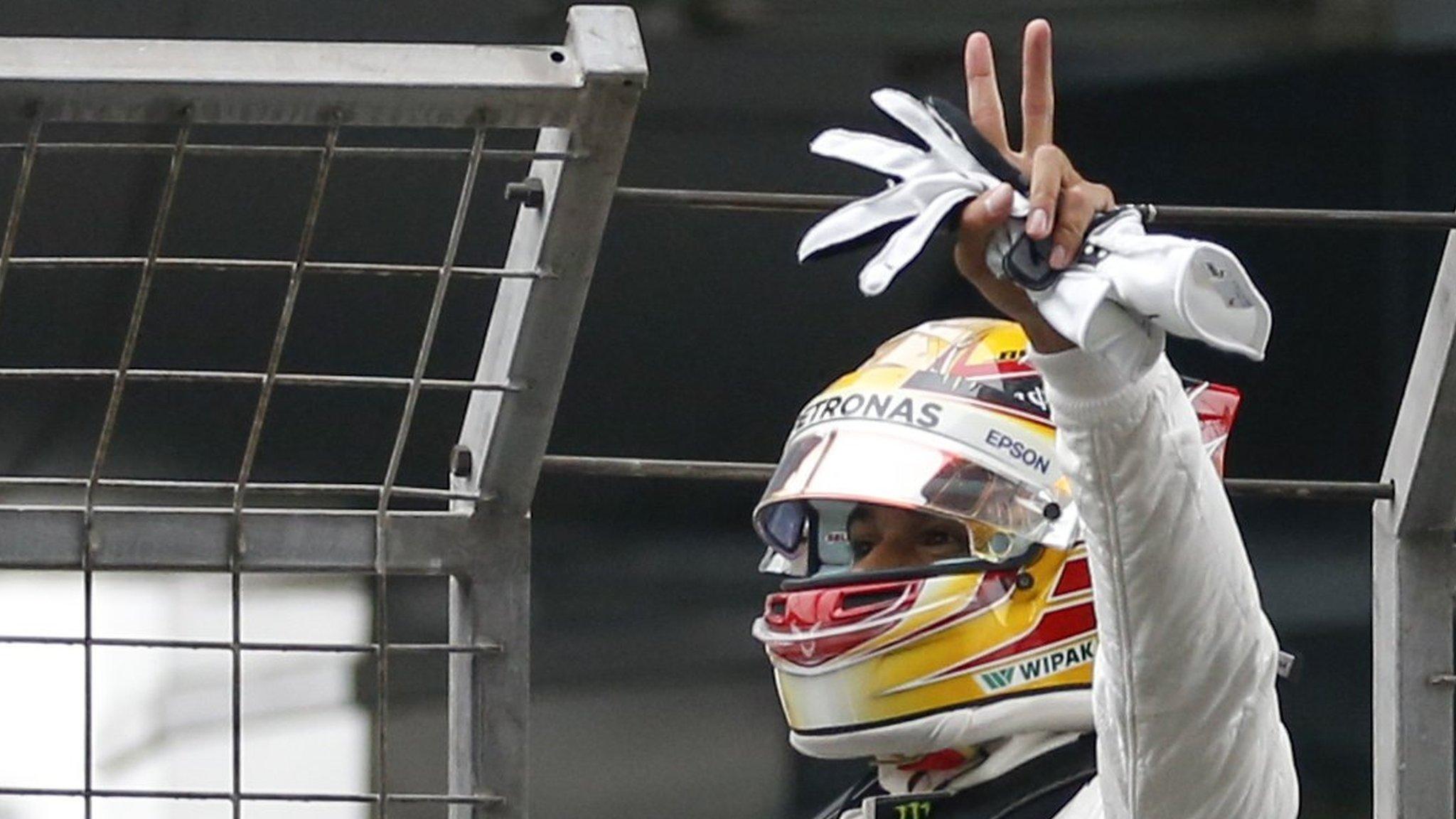
- Published9 April 2017
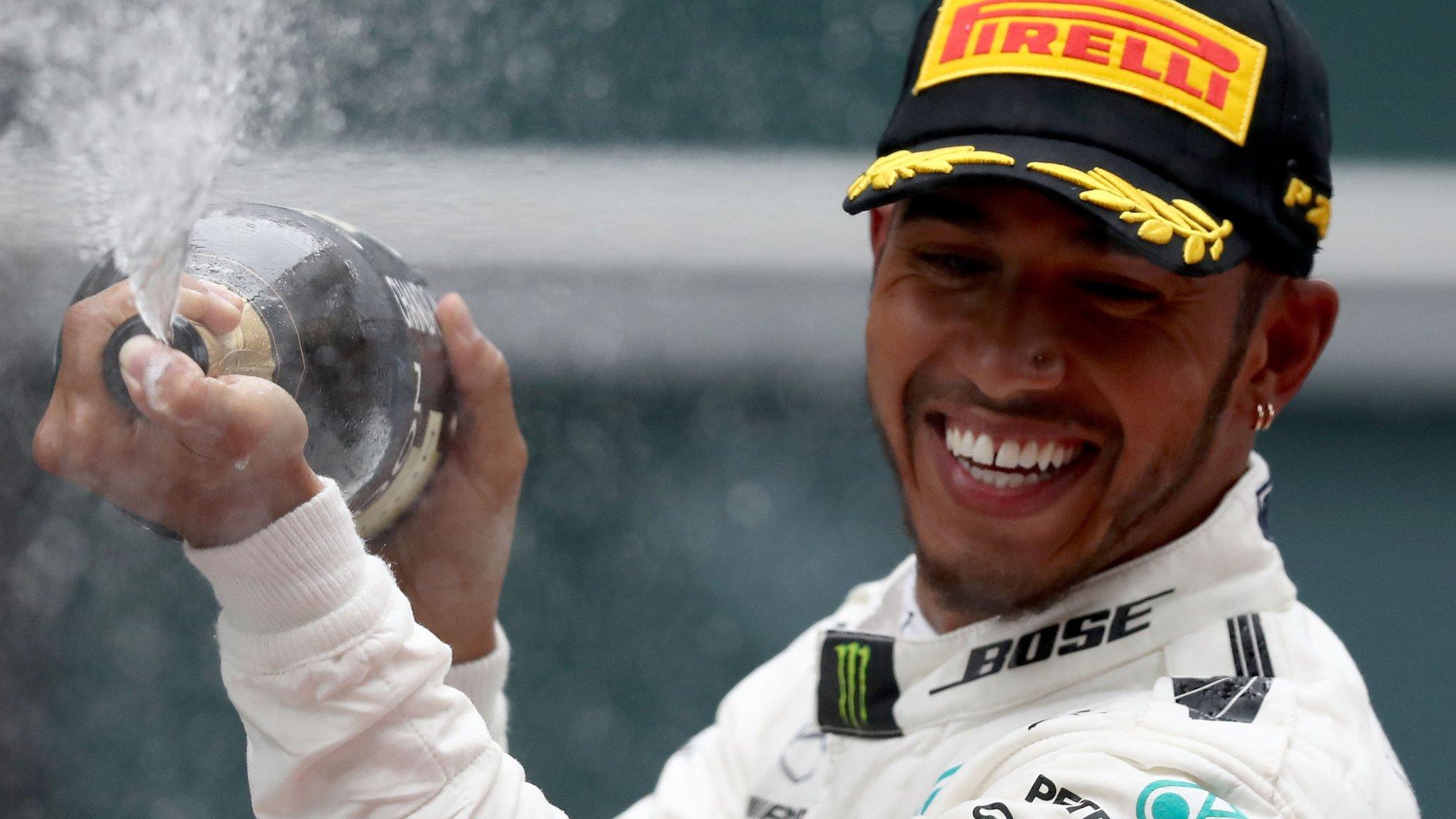
- Published9 April 2017

- Published3 April 2017
